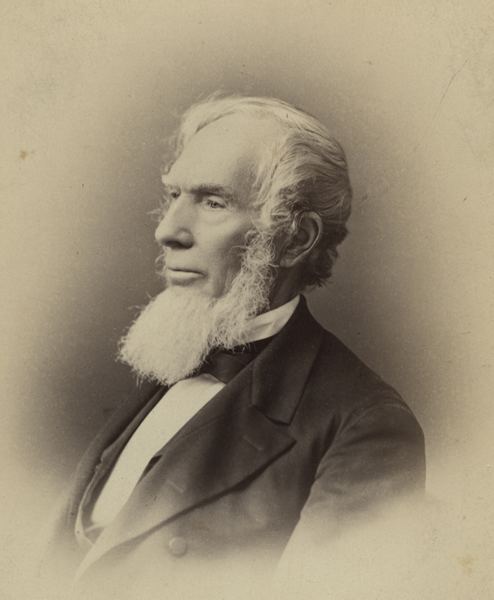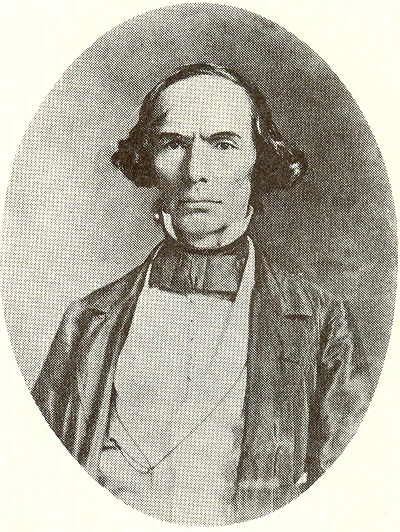Spouse(s) Louisa Frances Garland Name Landon Garland | ||
 | ||
Children Annie Rose Garland FultonCarrie Matilda Garland ThompsonAlice Virginia GarlandLouise Frances Garland Died February 13, 1895, Nashville, Tennessee, United States | ||
Landon Cabell Garland (1810–1895) was an American slaveholder and university administrator. He served as the second President of Randolph–Macon College in Ashland, Virginia from 1836 to 1846, Professor from 1847 to 1855, and then third President of the University of Alabama in Tuscaloosa, Alabama from 1855 to 1865, and first Chancellor of Vanderbilt University in Nashville, Tennessee from 1875 to 1893. He was a supporter of slavery in the United States.
Contents

Early life
Landon Garland was born March 21, 1810 in Nelson County, Virginia. He graduated with first honors from Hampden–Sydney College in 1829. His older brother Hugh A. Garland, who was one of the lawyers involved in the Dred Scott case and author of a biography of John Randolph of Roanoke, was also a Hampden-Sydney graduate. Their parents were Spotswood and Lucinda Rose Garland.
Career
Garland taught chemistry and natural philosophy at Washington College in Lexington, Virginia, from 1829 to 1830.
Garland taught chemistry and natural history at Randolph-Macon College in Ashland, Virginia from 1833 to 1834, eventually being elected chair of the department. From 1836 to 1846, he served as the second President of Randolph-Macon College.
Garland moved to the University of Alabama in Tuscaloosa, Alabama, in 1847, where he taught English literature, rhetoric and history. He served as its third President from 1855 to 1865. Concerned about a lack of discipline among students, he tried to turn it into a military institution. During the American Civil War of 1861–1865, the University of Alabama was burned to the ground. After a year of trying to rebuild the university, Garland accepted the chair of philosophy and astronomy at the University of Mississippi in 1867. It was here that Methodist Bishop Holland Nimmons McTyeire (1824–1889) sought out his former teacher and enlisted him in the campaign to build a Methodist university in Nashville, Tennessee. Garland, the most highly respected academic in Southern Methodism, wrote essay after essay in church publications on the need for an "educated ministry." With Garland on board, the bishop now needed the money, and for that he turned to Commodore Cornelius Vanderbilt.
Garland had definite ideas about the rules that would govern the university's place in this world. Under Garland's plan, Vanderbilt would have four departments: Biblical Studies and Literature, Science and Philosophy, Law, and Medical. Though Bishop McTyeire usually was there looking over his shoulder, Chancellor Garland clearly set the mood of the campus. Steeped in Scottish moral philosophy, he believed that the development of character was the central purpose of a true university. He did his part to mold character each Wednesday when he preached sermons to the student body in chapel, and he was staunch in his opposition to dormitories, claiming they were "injurious to both morals and manners."
In the early days, the closest thing to campus radicals were the law students. In fact, the law students provided the first challenge to the chancellor over the concept of an open forum. Garland had invited John Sherman (1823–1900), brother of Gen. William Tecumseh Sherman (1820–1891), to address the students in chapel. For the law students, it was more than they could bear to sit through a speech by the brother of the Yankee general who had burned a wide swath from Atlanta to the sea. The law students held a protest meeting, then marched single file out of the building, some playing Dixie on their harmonicas.
In 1889, Bishop McTyeire died. Two years later, in 1891, Garland tendered his resignation to the Board of Trustees, but they kept it in abeyance until 1893 when the Board named as Chancellor James Hampton Kirkland (1798–1868).
Views on slavery
Garland owned "up to 60 slaves" before the American Civil War. Moreover, "he claimed that he did not own them as property, but he instead owned their labor." In an 1860 lecture at the University of Alabama, he said, "The negro has, through slavery, been taken up from a condition of grossest barbarity and ignorance, made serviceable to himself and to the world, and elevated and improved socially, morally, intellectually and physically."
Personal life
Garland was married to Louisa Frances (1812-1889). They had several children, including:
Garland died on February 13, 1895 in Nashville. He was buried alongside Bishops McTyeire, Joshua Soule (1781–1867) and William McKendree (1757–1835) in a fenced grave in the Vanderbilt University Divinity Cemetery.
Legacy
His papers, The Landon Cabell Garland Papers, 1830-1893, include correspondence, diaries, speeches, sermons, a report to the Vanderbilt University Board of Trust, and personal and biographical materials. The collection is small, only 1/3 of a cubic foot. These are personal papers of Chancellor Garland and are not to be confused with his university papers, which are housed in the University Archives. This collection provides a small snap shot of Chancellor Garland's personal life, with the family correspondence providing the main interest.
Garland Hall on the Vanderbilt University campus is named in his honor. There is also a Garland Hall on the University of Alabama campus named after him.
His portrait, painted by great-granddaughter Louise Lewis in 1907-1908, hangs in Kirkland Hall on the Vanderbilt University campus.
